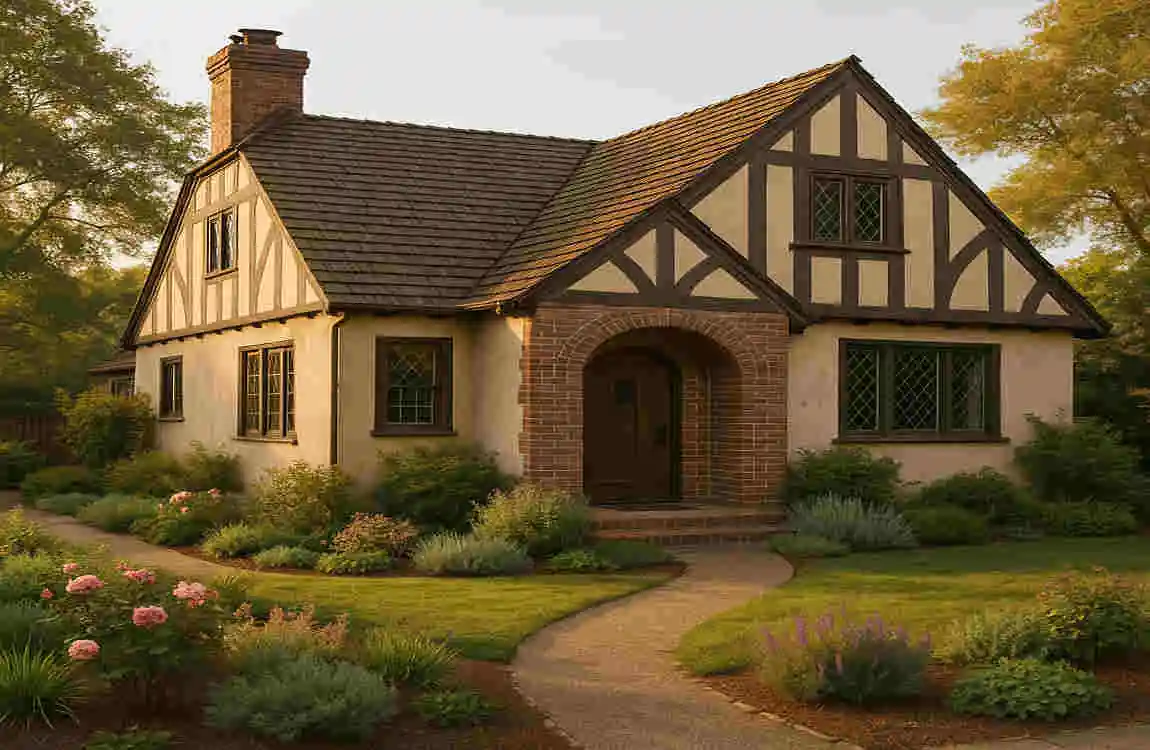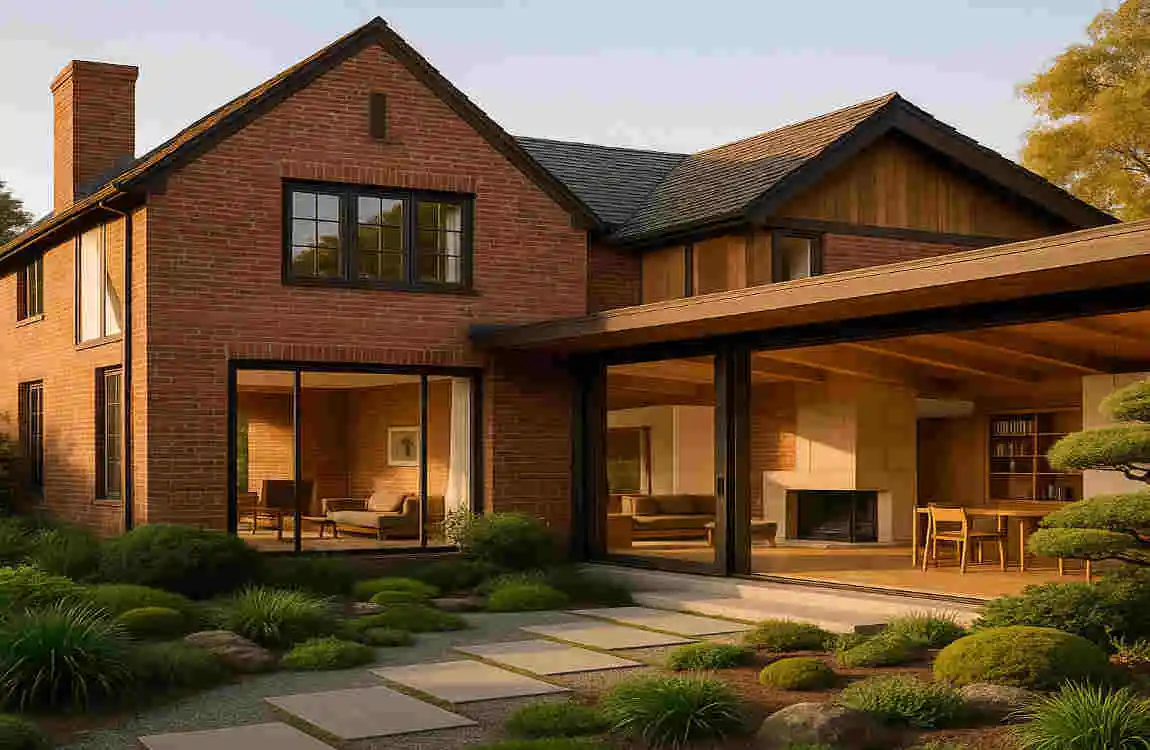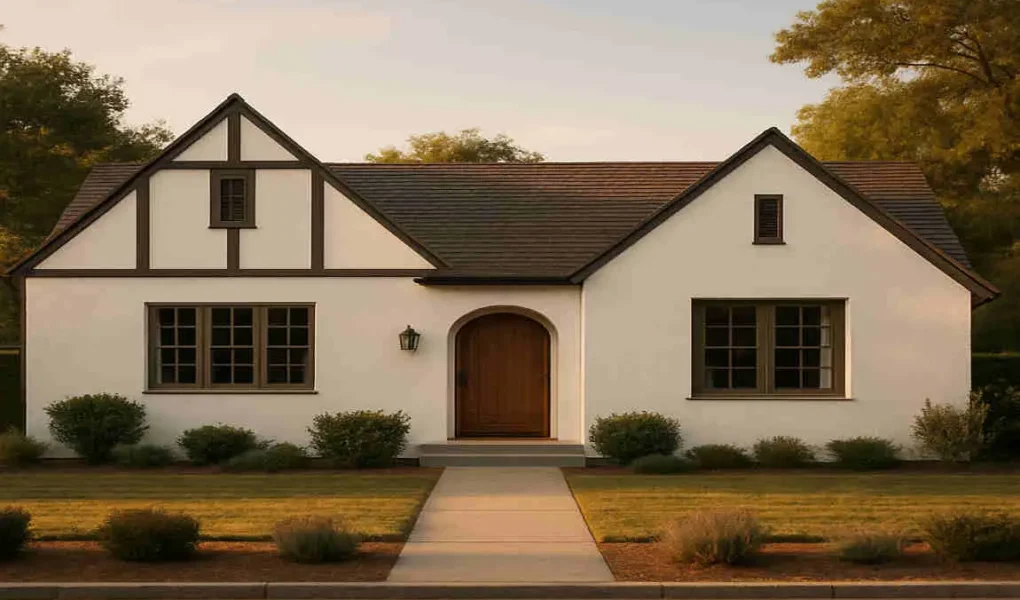Hey there, have you ever wondered what kind of home a visionary like Steve Jobs would choose to live in? Beyond the sleek iPhones and groundbreaking Apple innovations, there’s a quieter, more personal side to the man who changed technology forever. His home in Palo Alto, often referred to as the Steve Jobs house in Palo Alto, isn’t just a building—it’s a window into his values, his need for privacy, and his love for simplicity.
From its minimalist design to its role as a peaceful retreat in the heart of Silicon Valley, you’ll learn what made this house so special to Steve Jobs and why it continues to fascinate fans and homeowners alike. So, grab a cup of coffee, settle in, and let’s take a virtual tour of a place that’s as inspiring as the man himself.
The Historical and Personal Context of Steve Jobs’ Palo Alto House

Who Was Steve Jobs? A Quick Refresher
If you’re reading this, you probably know a thing or two about Steve Jobs. But let’s set the stage anyway. Steve Jobs was the co-founder of Apple Inc., a pioneer who turned personal computing into a household name with products like the Macintosh, iPod, and iPhone. His knack for blending technology with design made him a legend. But behind the keynote speeches and black turtlenecks was a man who valued his personal space just as much as his public innovations.
You may also read (why did kylie choose a five acre lot in hidden hills for this mega mansion).
Jobs wasn’t just a tech genius; he was a thinker who believed in the power of simplicity and focus. These principles didn’t just shape Apple—they shaped where and how he lived. That’s where Steve Jobs’ house in Palo Alto comes into the story.
Why Palo Alto? The Heart of Silicon Valley
Why did Jobs choose Palo Alto, you ask? Well, it’s no accident. Palo Alto sits smack in the middle of Silicon Valley, the tech hub of the world. This small city, with its tree-lined streets and proximity to Stanford University, has long been a magnet for innovators and entrepreneurs. For Jobs, living here meant being close to the action—Apple’s headquarters in Cupertino is just a short drive away—while still having a quiet place to retreat.
Palo Alto also has a charm that’s hard to resist. It’s got a mix of suburban calm and intellectual energy, making it the perfect spot for someone who wants to think big without the distractions of a bustling metropolis. For Jobs, this location was more than convenient; it was a deliberate choice to stay rooted in the epicenter of tech while keeping his personal life grounded.
When Did Jobs Move In? A Timeline
Steve Jobs bought his Palo Alto house in the mid-1990s, a time when he was navigating his return to Apple after being ousted in the 1980s. He and his wife, Laurene Powell Jobs, settled into this home with their growing family. The house, located in the Old Palo Alto neighborhood, became their sanctuary for nearly two decades until his passing in 2011.
This wasn’t a flashy purchase meant to show off wealth. Jobs wasn’t about that. Instead, the home was a practical and personal choice, a place where he could recharge and focus on what mattered most—family, creativity, and the next big idea.
Architectural and Design Features of Steve Jobs’ House, Palo Alto

A House That Screams Simplicity
Let’s talk about the look of Steve Jobs’ house in Palo Alto. If you’re picturing a futuristic mansion loaded with high-tech gadgets, think again. This house is surprisingly understated. Built in the 1930s, it’s a classic English-style cottage with a modest footprint—about 5,000 square feet. That might sound big, but for a billionaire, it’s pretty humble.
The architecture reflects a traditional design with brick walls, a pitched roof, and a cozy, almost old-world vibe. Yet, under Jobs’ ownership, it was transformed to embody his signature aesthetic: clean lines, functionality, and a deep respect for craftsmanship.
Minimalism at Its Core
If there’s one word to describe Steve Jobs’ design philosophy, it’s minimalism. Just like Apple products strip away unnecessary clutter to focus on what’s essential, his home followed the same rule. The interior spaces were kept simple—no over-the-top decorations or flashy furniture. Jobs believed that less is more, and this house was a living example of that.
For someone like me, with a passion for home decor, this approach is inspiring. It’s a reminder that you don’t need to fill every corner with stuff to make a space feel like home. Instead, focus on quality over quantity. What do you think—could you live in a space this pared-down?
Unique Materials and Construction
The house wasn’t just about looking simple; it was built with intention. Jobs was known to be meticulous, and that showed in the materials used. Redwood and glass played a significant role, creating a warm yet modern feel. Large windows let in tons of natural light, blurring the line between indoors and outdoors.
There were also thoughtful touches, such as custom woodwork and understated finishes. These elements weren’t there to impress visitors but to create a space that felt authentic and lived-in. It’s a lesson for anyone designing a home: prioritize materials that age well and feel timeless.
A Reflection of Jobs’ Values
What I love about this house is how it mirrors Jobs’ core beliefs. Simplicity? Check. A connection to nature? Absolutely—thanks to the garden and open design. Functionality? You bet—every space had a purpose. The Steve Jobs house in Palo Alto wasn’t just a place to live; it was a physical representation of how he saw the world.
As a real estate agent, I often tell clients that a home should reflect who they are. Jobs did precisely that. So, take a moment and think: does your space reflect your personality?
The Quiet Sanctuary: Privacy and Seclusion in Silicon Valley
Keeping the World at Bay
Silicon Valley is a busy place—think startups, venture capitalists, and constant buzz. Yet, in the middle of all that, Steve Jobs carved out a private oasis. The Steve Jobs house in Palo Alto was tucked away in a quiet, residential area, far from prying eyes. High hedges and mature trees surrounded the property, acting like a natural shield against paparazzi and curious onlookers.
For someone as famous as Jobs, privacy wasn’t just a luxury—it was a necessity. This house gave him a space to step away from the spotlight and be a husband and father. Isn’t that something we all crave sometimes? A little corner of the world that’s just ours?
A Retreat from the Hustle
The tech world is relentless. Deadlines, innovations, and competition never stop. But Jobs knew the importance of stepping back to recharge. His Palo Alto home was that escape. It wasn’t about showing off wealth or hosting extravagant parties; it was about peace. The design and location worked together to create a calm bubble in the middle of Silicon Valley’s chaos.
Imagine coming home after a long day to a place that instantly soothes you. That’s what this house was for Jobs. What’s your go-to spot for unwinding?
You may also read (inside sjp house the stylish home of sarah jessica parker everyones talking about).
Gardens and Greenery for Serenity
One of the standout features of the property is its landscaping. The garden wasn’t just a patch of grass—it was a carefully curated space with fruit trees, flowers, and winding paths. Jobs loved nature, and it’s said he enjoyed tending to the garden himself. This connection to the outdoors added to the house’s tranquil vibe.
As someone who appreciates home decor, I can’t help but admire how the exterior complements the interior. A well-designed garden isn’t just pretty—it’s a mood booster. Have you thought about adding some greenery to your space?
Interior Insights: How the House Mirrors Steve Jobs’ Personality
Letting in Light and Ideas
Walk into the Steve Jobs house in Palo Alto, and one of the first things you’d notice is the light. Huge windows and open spaces made the home feel airy and bright. For Jobs, this wasn’t just about aesthetics—it was about clarity and creativity. Natural light has a way of lifting your spirits and sparking ideas.
The open layout also encouraged connection. There weren’t many walls separating rooms, which reflected Jobs’ belief in transparency and collaboration. It’s a subtle but powerful way to design a space for inspiration.
Personal Touches, Minimal Clutter
If you’re expecting a house full of fancy art or over-the-top decor, you’d be surprised. Jobs kept things minimal inside, too. Furniture was sparse but carefully chosen—think functional pieces over flashy ones. Personal touches were there, but they were understated, like family photos or books that meant something to him.
This approach is an excellent takeaway for anyone looking to decorate their home. You don’t need a lot to make a space feel personal. What’s one item in your home that tells your story?
Technology Meets Simplicity
You might think a tech icon’s home would be packed with gadgets, but Jobs kept even that minimal. Technology was integrated subtly, never overpowering the space. It’s a reminder that tools are there to serve us, not to dominate our lives. In a world where we’re glued to screens, that’s a refreshing perspective.
The Legacy of Steve Jobs’ Palo Alto House Today
What Happened After 2011?
After Steve Jobs’ passing in 2011, the Steve Jobs house in Palo Alto remained in his family’s possession. Laurene Powell Jobs and their children continued to live there for some time. The house wasn’t sold or turned into a museum—it stayed a private residence, honoring Jobs’ need for seclusion even after his death.
Today, it remains closed to the public, which adds to its mystique. It’s a quiet piece of history tucked away in Silicon Valley, untouched by commercial hype.
Inspiring Silicon Valley Homes
Jobs’ approach to design—minimalism, nature, and functionality—has left a mark on Silicon Valley. Many tech entrepreneurs and homeowners in the area have taken cues from his style, opting for homes that prioritize calm over chaos. Clean lines and open spaces are now a staple in modern architecture here, and I think Jobs played a significant role in that trend.
As someone in real estate, I’ve seen how design trends evolve. Jobs’ influence shows us that homes can be both innovative and timeless. What trends are you seeing in your area?
A Symbol in Public Memory
Even though most of us will never step inside, the house holds a special place in public memory. It’s often mentioned in stories about Jobs as a symbol of his grounded nature. Media portrayals paint it as the anti-mansion—a place where one of the world’s wealthiest men chose simplicity over excess. That’s powerful.
Steve Jobs’ House in Palo Alto in Popular Culture and Media
Featured in Stories and Documentaries
Steve Jobs’ house in Palo Alto has popped up in various documentaries and books about his life. Biographies like Walter Isaacson’s “Steve Jobs ” mention the home as a backdrop to his personal struggles and triumphs. It’s often described as a place where he made some of his most significant decisions, away from the public eye.
Documentaries also show glimpses of the house, though rarely the interior. These snippets fuel public curiosity, making the home almost as iconic as the man himself.
Rumors and Fascination
Because the house is so private, rumors swirl. Some say Jobs designed hidden tech features into the walls (unlikely, given his minimalism). Others speculate about secret meetings held there. Most of this is just imagination running wild, but it shows how much we’re drawn to mysteries. What’s the wildest rumor you’ve heard about a famous person’s home?
A Symbol of Innovation and Privacy
Journalists and biographers often interpret the house as a metaphor for Jobs himself—innovative yet private, bold yet understated. It’s not just a building; it’s a story of balancing fame with family, creativity with calm. That duality is what keeps us talking about it.
Visiting or Viewing: What Fans and Visitors Should Know
It’s Still a Private Home
Before you pack your bags for a pilgrimage, know this: the Steve Jobs house in Palo Alto is not open to the public. It’s a private residence, and the family values their privacy just as much as Jobs did. There are no tours, no visitor centers, and definitely no peeking over the fence.
Nearby Landmarks to Explore
If you’re in Palo Alto and want to feel closer to Jobs’ legacy, there are other spots to check out. Here are a couple of ideas:
- Apple Park Visitor Center: Located in Cupertino, this is a great place to learn about Apple’s history and see the iconic “spaceship” campus.
- Stanford University: Jobs gave his famous 2005 commencement speech here. Walk the campus and soak in the innovative vibes.
Respecting Boundaries
If you do drive by the house (it’s easy to find with a quick search), be respectful. Don’t take photos or linger too long—it’s still someone’s home. Admire from a distance and remember the value Jobs placed on privacy. How would you feel if strangers showed up at your doorstep?
Lessons from Steve Jobs’ Palo Alto House for Modern Homeowners and Entrepreneurs
Embrace Minimalism in Your Space
One of the biggest takeaways from Steve Jobs’ house in Palo Alto is the power of minimalism. You don’t need a lot of stuff to create a meaningful space. Clear out the clutter, focus on what you love, and let your home breathe. Trust me, as someone who’s into home decor, a simpler space can feel incredibly freeing. Ready to declutter a room this weekend?
Balance Privacy and Connection
In today’s digital age, privacy is harder to come by. Jobs’ home shows us how to create boundaries—literal and figurative. Design your space to have areas where you can unplug and recharge. Maybe it’s a cozy corner or a backyard nook. Where do you go to escape the noise of the world?
Environment Shapes Creativity
Jobs knew that where you live impacts how you think. His home was a place of calm and focus, which likely fueled his innovations. Think about your own space—does it inspire you? If not, small changes, such as adding plants or letting in more light, can make a big difference.
Here’s a quick look at how Jobs’ design principles can apply to your home:
| Principle | What It Means | How to Apply It |
|---|---|---|
| Minimalism | Keep only what’s essential | Declutter one room at a time |
| Connection to Nature | Bring the outdoors in | Add plants or open windows |
| Functionality | Every item should serve a purpose | Choose multi-use furniture |
Conclusion
The Steve Jobs house in Palo Alto is more than just a building—it’s a symbol of innovation, privacy, and simplicity. Tucked away in the heart of Silicon Valley, this quiet sanctuary gave Steve Jobs a place to dream, create, and connect with his family away from the world’s gaze. From its minimalist design to its serene gardens, every detail reflects the man behind Apple’s magic.
Even though we can’t step inside, the lessons from this home linger. It inspires us to design spaces that nurture creativity, prioritize calm, and reflect who we are. So, the next time you’re tweaking your own home, think about Jobs’ approach. How can you make your space a sanctuary, too?
You may also read (explore the stunning oceanfront estate of prince in turks and caicos).




